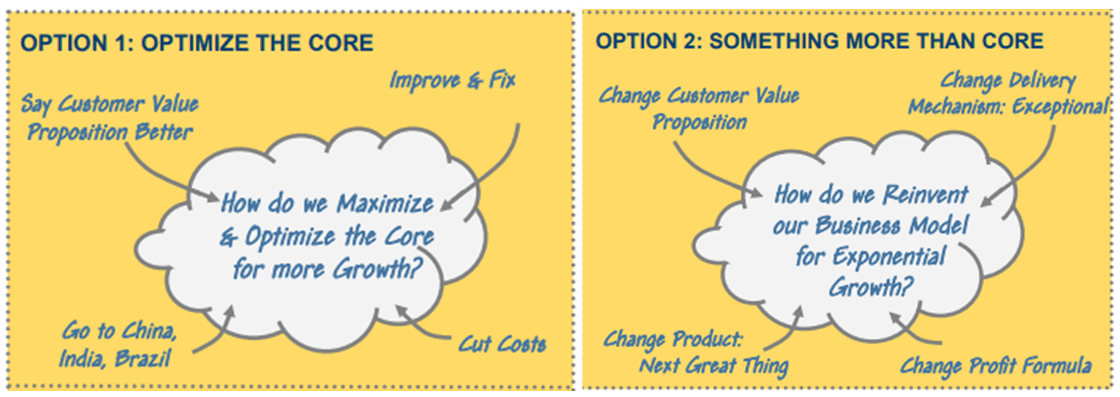
7 Secrets of a Strategy of Preeminence

7 Secrets of a Strategy of Preeminence
 by Robert Hargrove
by Robert Hargrove
The best CEOs don’t just have strategies, they have strategies of preeminence that result in outside success.
The term “strategy of preeminence” was coined by my good friend and partner, Jay Abraham. I’ve pondered Jay’s strategy of preeminence for years and always thought it was like a great Picasso painting that rattles your brain and makes you see the world differently.
Jay shares his ideas with a brilliant splash of color, rendering them like an impressionist painting, leaving your imagination to fill in the rest. I asked Jay if I could collaborate with him, building out his idea. Jay graciously granted me full creative license.
What exactly do we mean by a strategy of preeminence? First a definition. Strategy is a focused and coherent way to meet a challenge, such as creating a successful business. Preeminence means “the fact of surpassing all others.”
Companies with a strategy of preeminence are so good at what they do that no one else can offer a close substitute.
Google has a strategy of preeminence in the world of search and online advertising, connecting people to the information they need. The company is so good at what it does that it surpassed Yahoo and Bing over a decade ago. It is interesting to note that Google is worth more than all USA airlines combined.
P&G has a strategy of preeminence in the world of market innovation that is a result of capitalizing on the consumer’s frustration. The company introduced three consumer products that grew into billion dollar businesses capitalizing on customer-centric innovation. Think Pampers, Swiffer, Mr. Clean.

Chipotle is another company with a strategy of preeminence. Theirs involves providing delicious, healthy, fast food with an ethnic twist at a low prices. The company is growing at 30% a year and is disrupting McDonald’s, which is growing at less than 10% a year for the first time in decades.
These companies treat their customers as clients, who are under their care and protection.
Without a strategy of preeminence, the chances of being disrupted are very high.
Every day a company on the S&P 500 list goes out of business to be replaced by a disruptive competitor. If the present trend continues, by 2030, half the companies on the list will disappear.
Harvard Business School estimates that 83% of large companies feel they need a strategy to deal with disruptive competitors fresh from the niche. But only 36%, have the confidence they can do it. At the same time, only 12% of companies—large, medium, and small—have a strategy that goes out beyond the next year or so.
According to the Kauffman Foundation, eight out of ten entrepreneurial businesses also end up going out of business. They may have come up with a good idea for a business, yet were not successful in coming up with a customer value proposition.
Or they haven’t looked at how they could reinvent their company by combining an innovative business model with resources and external and internal processes to build a game-changing product, go to market, and turn a profit.
A strategy of preeminence may be the fastest and most powerful way to change your business results.
It’s my observation that most business leaders don’t have a strategy of preeminence that is different from a strategy of operational excellence.
If you want a strategy of preeminence, you might start by looking at the synonyms for “preeminence,” which might help you reset your mindset: greatness, supremacy, distinction, innovative excellence, first-rate. Ask yourself: How do these definitions apply to your company and what you offer your customers?
You also may need to recognize that you probably don’t understand your present strategy well enough to know whether it’s working.
Create a strategy of preeminence either by “optimizing the core” or doing “something more than core.”
As friend and partner, Shim Bae Kim, Vice Chairman of Korea Telecom, points out, “We all love to talk about examples like Apple, Amazon, Google, but in fact, these kinds of companies are very rare.”
There are basically two ways of to get to a strategy of preeminence.
 The first is to think in terms of optimizing your core business by becoming better at what you already do. Amazon invented the idea of selling stuff online, then came out with Amazon Prime which lowered shipping costs for customers.
The first is to think in terms of optimizing your core business by becoming better at what you already do. Amazon invented the idea of selling stuff online, then came out with Amazon Prime which lowered shipping costs for customers.
 The second is to do something more than core that really represents a whole new business model. Steve Jobs did that when he moved away from selling computers to selling devices like the iPod, iPhone, and iPad.
The second is to do something more than core that really represents a whole new business model. Steve Jobs did that when he moved away from selling computers to selling devices like the iPod, iPhone, and iPad.

Every CEO and founder can create a strategy of preeminence and drive explosive growth.
In my work with executives and company founders, I have found that there is a process for creating a strategy of preeminence that can be applied in large, medium, or small companies and which represents an integrative, step-by-step process.
It starts with asking the leader, “Are you a strategist?” and is based on the premise that a strategy of preeminence is not just beating the competition, but creating a company that matters. Each step requires an active inquiry into some very key questions.
The 7 Secrets of a Strategy of Preeminence
1. Becoming the leader your business needs starts with empathy.
What are the rising aspirations and unmet needs of customers?
2. To get a stuck business unstuck, face reality.
What is the current business situation?
3. Declare an Impossible Future or ennobling purpose.
Who do we aspire to be as a company, to whom will we matter, and why?
4. Segment a high-growth market.
Where will we play as a company?
5. Create a strategy of preeminence.
What will we do for customers that is so good that the competition can’t offer a close substitute?
6. Create a delivery mechanism to match.
How will we combine a wining business model, resources and process to go to market and turn a profit?
7. Apply a profit formula.
How will we make money? The acid test: Are there enough customers willing to pay a high enough price?
Be a Monster of Execution
I have had the opportunity to work with some of the best CEOs and entrepreneurial-minded leaders in the world.
There is something about these leaders that stands out from the crowd: Once they create a strategy, they execute in a fiendish way.
The best leaders seek to accomplish big things (not small things) and pursue them with a level of ATTENTION, INTENTION, and DRIVE that most people have never experienced in their lives.
This is what leads to a track record of extraordinary accomplishment.
Download my free ebook here on the 7 SECRETS TO A STRATEGY OF PREEMINENCE.



